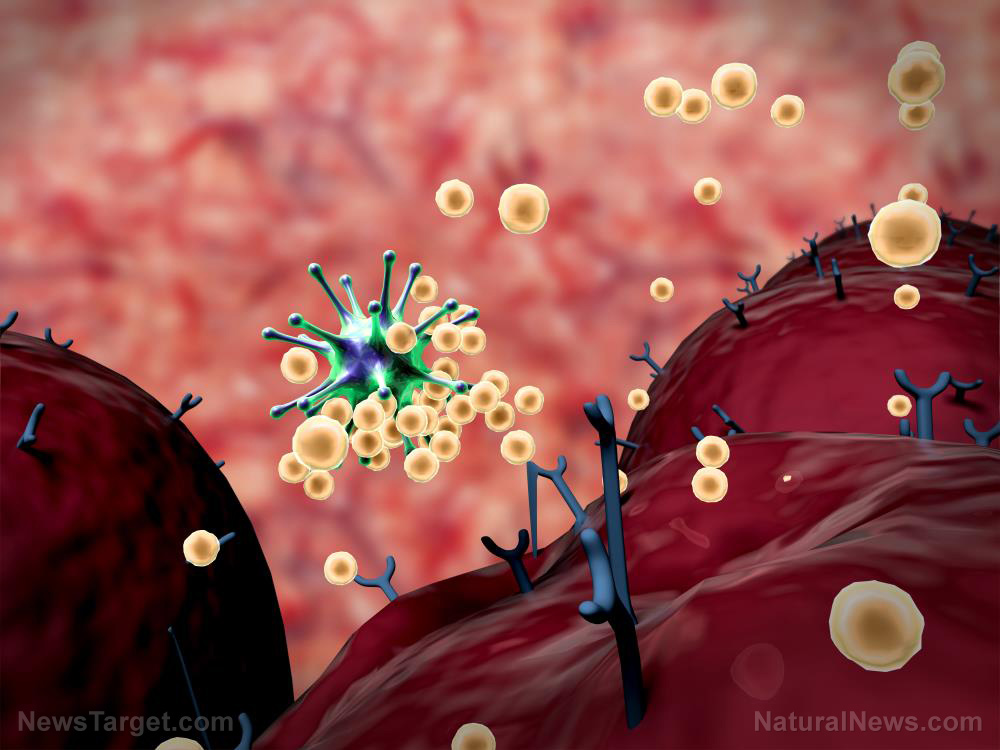BOMBSHELL: Genetic editing via CRISPR may cause widespread cancer, study warns
01/31/2019 / By Isabelle Z.

Any time a new technology has an industry buzzing, there will always be skeptics. When it comes to scientific advancements like genetic engineering and gene editing, much of that concern relates to the long-term effects of these seemingly miraculous practices. Even if something appears to be safe right now, how can anyone be certain it won’t cause problems five, 15, or 50 years down the line? Proponents used to laugh off these concerns, but a new game-changing study clearly illustrates the cancer-causing potential of genetic editing.
Some experts have said that CRISPR-Cas9, which entails altering specific genes in cells, could help us overcome diseases like cystic fibrosis, HIV, and Alzheimer’s. It almost sounded too good to be true, which should have been the first red flag. Now, the journal Nature Medicine has printed two studies that show the treatment could trigger cancer.
One study was carried out by Novartis and involved pluripotent stem cells, while the other was carried out by Karolinska Institute and focused on retinal cells. Both of the studies in question focus on the p53 gene, which plays a role in preventing tumors by killing cells that have damaged DNA. Past research has shown that most tumors in humans cannot form when p53 is working correctly.
P53 also defends the body from the genome changes made in CRISPR-Cas9. When DNA is snipped and replaced using the procedure, p53 essentially causes the edited cells to self-destruct, which is why CRISPR fails so often. When CRISPR does work, however, it could be because the p53 in the cell doesn’t work as it should. Faulty p53 is also considered a precursor to several types of cancer.
One of the Karolinska study’s authors, Emma Haapaniemi, explained the problem: “By picking cells that have successfully repaired the damaged gene we intended to fix, we might inadvertently also pick cells without functional p53. If transplanted into a patient, as in gene therapy for inherited diseases, such cells could give rise to cancer, raising concerns for the safety of CRISPR-based gene therapies.”
In other words, the cells with genomes that are edited successfully by the procedure can seed tumors inside of people. While this problem seems to apply only when CRISPR is used to replace the DNA that causes diseases with healthier versions and not when it simply excises DNA, it is still something that warrants serious attention. After all, when the goal of the procedure in the first place is to avoid disease, it doesn’t make much sense to return edited cells to people that are likely to become cancerous.
It’s not something that only happens on rare occasions. In fact, p53 mutations are behind nearly half of all ovarian cancer cases, as well as 43 percent of colorectal cancer cases, 38 percent of lung cancer cases, a third of cancers of the liver, stomach, and pancreas, and a quarter of breast cancer cases.
Experts, stakeholders are taking these findings extremely seriously
Let’s be honest: There are a lot of studies out there, and they sometimes have conflicting findings or ulterior motives. Just how seriously should we be taking these findings? If you need some perspective, consider this: The release of the studies caused the stocks of companies developing therapies based on CRISPR to tank.
CRISPR Therapeutics shares dropped 13 percent, while those of Intellia Therapeutics, Editas Medicine, and Sangamo Therapeutics registered drops of 10, eight, and five percent respectively. Not surprisingly, representatives from several firms were quick to defend the technology, displaying almost Monsanto-like levels of denial. Some of the therapies these firms are working on that will be called into question include those for severe combined immunodeficiency, glycogen storage disease, and cystic fibrosis. Others wouldn’t be affected by the finding as they involve removal without replacement. This is the case for therapies these firms are developing for sickle cell disease, thalassemia, and some types of blindness.
Another top CRISPR scientist told Stat News that the new data was “pretty striking” and that it points to the possibility that a fatal flaw in certain uses of the procedure had been missed. The scientist requested anonymity because of his involvement with genome editing firms.
After all the studies that have already been carried out using CRISPR in mice, it’s only natural to wonder why the rodents have been developing tumors left and right. According to Haapaniemi, it’s easy to miss the effect in smaller studies that are focused on editing a single gene in one type of cell. It’s far easier to see in large-scale experiments like the two studies that were recently published. Moreover, she added that lab mice are often killed early, well before they would have had the chance to develop cancer.
This is precisely why it’s so important not to get caught up in the hype of the “next big thing,” even when initial studies show there aren’t any dangers. There are lots of profits to be made, there’s no doubt about it, but there’s always a price to pay for interfering with nature.
Sources include:
Tagged Under: biomedical research, biotechnology, CRISPR, CRISPR-Cas9, disease treatments, DNA, gene editing, genes, harmful medicine, P53, research, science, technology



















